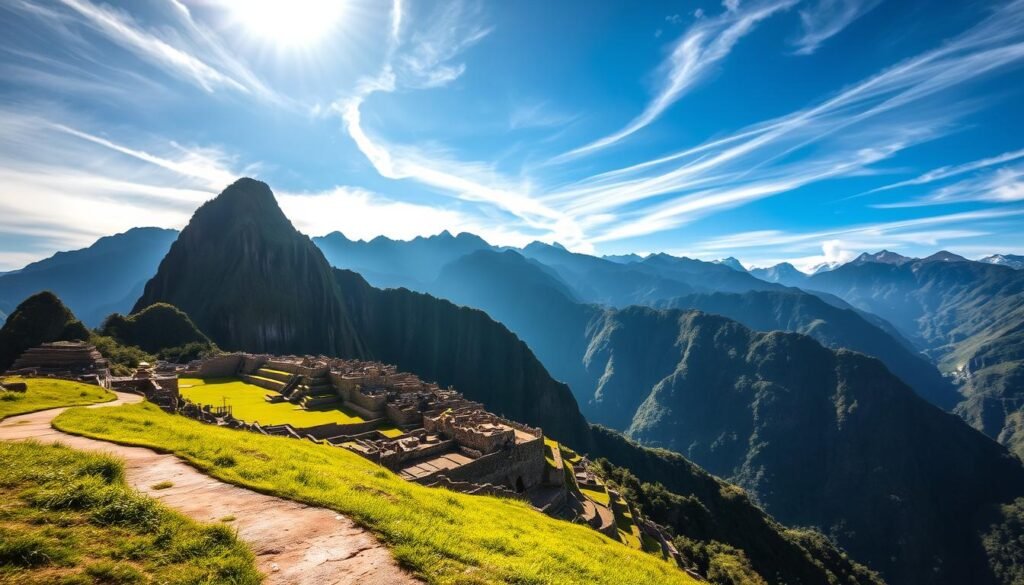Fact: The citadel limits daily entry to roughly 4,500–5,600 people, so when you plan matters as much as where you stand.
I’ll show you how I pick months and hours so your trip feels calm, not rushed. The site stays open year-round, but weather and crowd patterns shift with the dry and rainy seasons.
Local guides I trust point to April–May and September–November as sweet spots for clearer skies and fewer people. I aim for early buses and late afternoons to catch the glow while avoiding the mid‑day surge.
Along the way I explain how daylight, clouds, and new circuit rules shape views and access. I also cover packing and pacing so you get better photos and more energy for walking the trails.
Key Takeaways
- Daily visitor caps make planning essential for a relaxed experience.
- April–May and September–November often balance weather and crowds.
- First buses at 5:30 a.m. and a 5:30 p.m. close affect sunrise and sunset plans.
- Light, clouds, and the new circuit system change how the site looks.
- Packing for shifts in weather improves comfort and photos.
My quick answer: the sweet spot for weather, crowds, and views
I narrow my choices to a few shoulder months that balance clear skies and fewer people. For me, late April–May and September–early November hit that balance. These months give steady weather, cinematic light, and friendlier crowds.
Why I favor late April–May and September–early November
Late April–May follows the wet season and brings saturated greens with clearer skies. I find mornings cool and crisp, and afternoons mostly dry.
September–early November eases back into wetter patterns while still offering great light and fewer visitors. I often enter before the 10 a.m. surge and leave after the midday peak.
Dry vs. rainy season at a glance for U.S. travelers
| Season | Months | Weather | Visitor pattern |
|---|---|---|---|
| Dry season | April–October | Clear skies, cool mornings | Higher visitors, peak mid‑day |
| Rainy season | November–March | Lush terraces, afternoon showers | Fewer visitors, lower prices |
| Shoulder months | Late Apr–May, Sep–early Nov | Stable weather, great light | Best balance of crowds and views |
“I plan my entries around the 10 a.m.–2 p.m. rush and favor mornings during wet months.”
- I pack layers for mild temperatures and a rain shell for november march showers.
- Timing your entry just before or after peak time improves photos and pacing.
- When visiting machu picchu in the rainy season, expect mist and intimate, moody scenes.
Best time to visit Machu Picchu
I start by locking in the exact route and entry slot—those choices shape the whole trip.
Present-day reality: Peru’s Ministry of Culture now runs a circuit system that routes visitors through the terraces and ruins in timed groups. Circuits last from roughly two to seven hours and dictate what sections of the site you will see and when.
Daily caps hover between 4,500–5,600 depending on the season, so I treat tickets as my anchor. Popular add-ons like Huayna Picchu often sell out months ahead, so I book them first.
How I plan around access and crowd waves
- I buy the right tickets before firming up trains, hotels, and guided walks.
- I read calendars for Holy Week, U.S. spring breaks, Inti Raymi, and July holidays to spot spikes.
- If I can be flexible, I aim for shoulder edges and off-peak slots to dodge heavy visitor flows.
“Secure access first, then shape the rest of your days around weather and light.”
| Factor | What I watch | How I act |
|---|---|---|
| Circuits | Route length and start times | Pick circuit, then buy tickets |
| Tickets | Daily caps and add-ons | Reserve months ahead for peaks |
| Seasonal waves | Festival and holiday spikes | Avoid known surge dates |
Weather by season: dry months, rainy months, and what that means for your trip
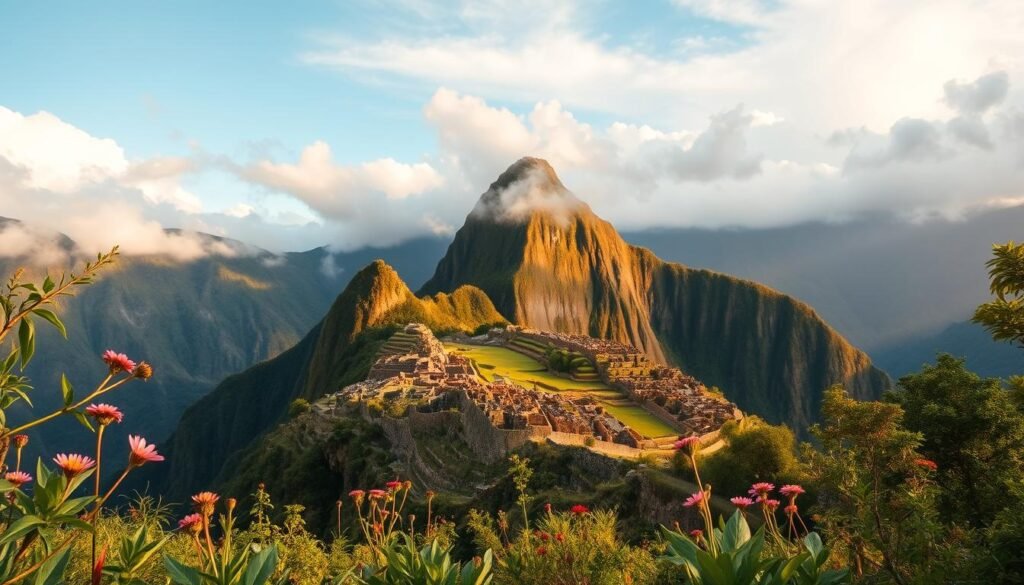
I plan around clear mornings and afternoon rain windows to make each visit count. The local weather shifts with the seasons and shapes views, walking comfort, and photo chances.
Dry season (April–October): clearer skies, cooler mornings
The dry season brings crisp mornings and reliably blue skies. I use early starts to catch sweeping light and low cloud cover.
Daytime temperatures usually sit in the mid‑50s to mid‑70s °F. Even with sun, I layer up for cool mornings and wind chill.
Rainy season (November–March): greener terraces, mist, and fewer visitors
The rainy season means vivid greens, waterfalls, and dramatic mist. Showers often come in bursts rather than all‑day rain.
I welcome the atmosphere and smaller crowds, but I always pack a shell, dry bag, and quick‑dry layers.
February note: Inca Trail closure, but the citadel stays open
February closes the Inca Trail for maintenance, yet the citadel remains accessible by train and bus. I find it quieter and moodier, perfect for misty photos.
“I treat weather as a planning tool: it dictates gear, entries, and whether I chase blue skies or moody clouds.”
- Quick tip: aim for morning entries in wet months to dodge afternoon showers.
Crowds and peak season patterns I plan around
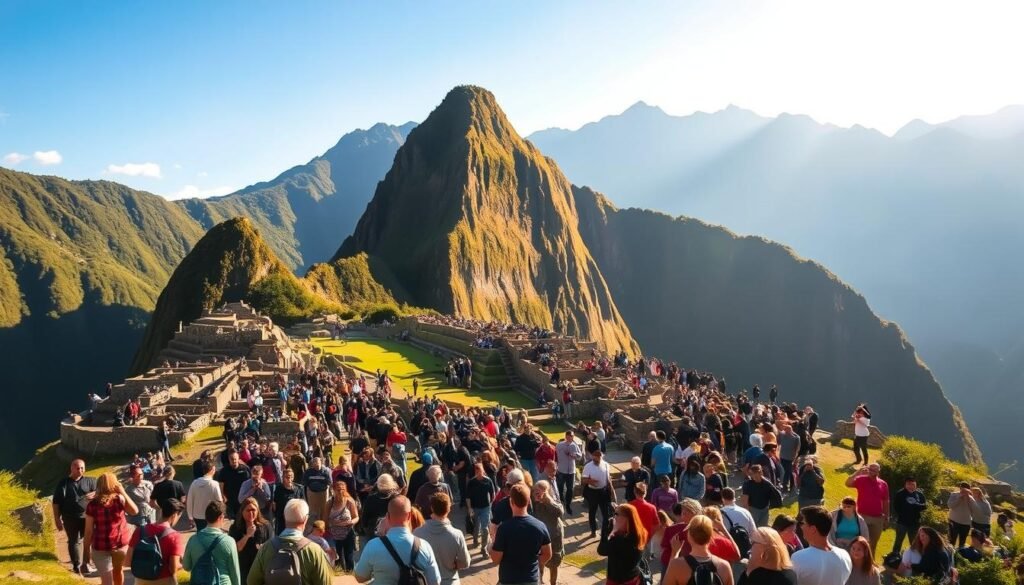
Crowd waves around festivals and school breaks shape how I schedule each citadel day. I watch the calendar and move my plans when I see big events that lift visitor numbers.
Holy Week and U.S. spring break surges
Late March through April often brings an early swell. Holy Week and U.S. spring breaks trigger fast rises in visitors.
I treat those weeks like separate mini‑peaks, not just part of the regular peak season. That means I shift tour days by 24–48 hours when possible.
Inti Raymi in June and Peru’s Independence Day in July
June 24 and July 28 are major draws. Inti Raymi pulls both domestic and international crowds, and Independence Day adds local travel peaks.
If I can’t avoid those dates, I book early morning or late afternoon time slots and build margins for lines and transport.
“Expect congestion to crest between 10 a.m. and 2 p.m. daily.”
- I plan around distinct crowd waves, not just the summer high peak.
- I watch weekends vs. weekdays—sometimes a weekday still feels crowded.
- If a festival falls on my schedule, I either join it or move my Machu Picchu day before or after.
- I also stagger my days in Cusco and the Sacred Valley so the busiest days aren’t stacked.
Cheapest time to visit Machu Picchu without sacrificing the experience
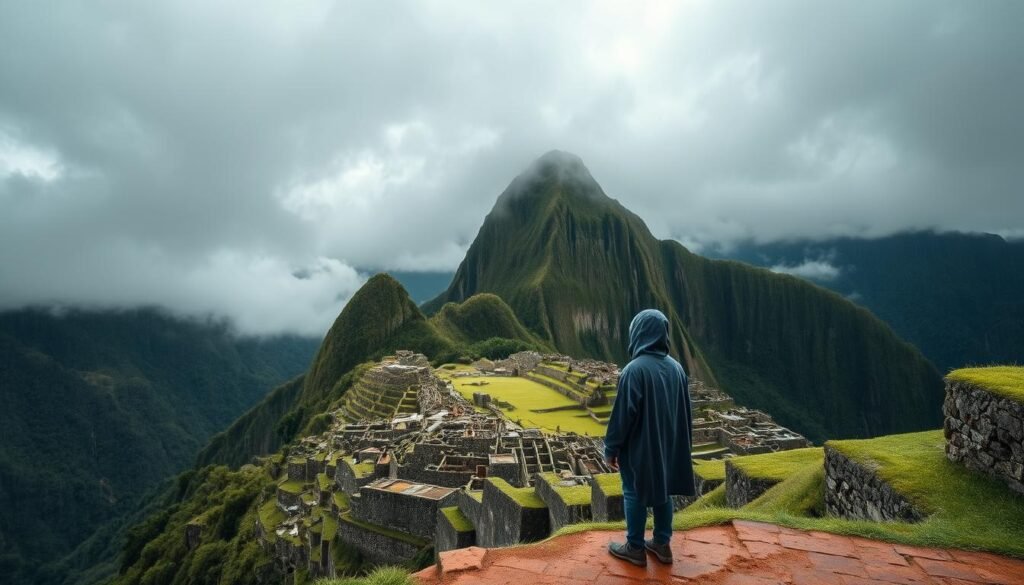
For wallet-friendly travel I lean into the wet months and plan my days around clearer mornings and dramatic clouds. November–March often brings lower hotel and tour rates, and the terraces shine with saturated greens.
Why November–March can be budget-friendly and magical
I pick November–March to stretch my budget while keeping a rich experience. Fewer people mean quieter paths and more time for photos of the landscape shrouded in mist.
Rain usually falls later in the day, so I book morning entries and dodge most showers. Even in low season I reserve key tickets ahead, especially mountain routes that sell out.
“A short rain burst often clears to spectacular light — I pack a shell and stay flexible.”
- Savings: lower prices let me upgrade a night or hire a private guide.
- Practical: book Huayna Picchu 2–3 months ahead in this season.
- Vibe: the site feels less crowded and more personal.
| Factor | November–March | Why it matters |
|---|---|---|
| Prices | Lower | Stretch budget, upgrade options |
| Crowds | Less crowded | Calmer experience, better photos |
| Weather | Mornings clearer, afternoon rain | Plan morning entries, pack for showers |
Daily timing strategy: mornings, mid‑day peaks, and golden late afternoons
![]()
I set simple rules for each day: catch the calm light or skip the mid‑day crush. That focus shapes how I plan transport, snacks, and photos.
First bus from Aguas Calientes, site hours, and best light
The first bus leaves Aguas Calientes at 5:30 a.m. and runs every five minutes. I often take that bus for quiet morning light and broad views before visitors swell.
Machu Picchu stays open until 5:30 p.m., so late afternoons are a great alternative. Golden light softens terraces while many day‑trippers head back.
How I dodge the 10 a.m.-2 p.m. rush
Peak congestion hits between 10 a.m. and 2 p.m. I build buffers around that window so I’m not stuck in lines or crowded viewpoints.
- I start at panoramic spots early, then move to detailed areas as the site fills.
- If morning mist lingers, I wait; the reveal often rewards patience with dramatic views.
- I keep a short “plan B” shot list so shifting light and arrival times don’t derail my experience.
- Finally, I factor return bus lines into my schedule, especially after sunset glow when many people leave at once.
“Catch the first bus from Aguas Calientes for quiet light, or aim after 2 p.m. for a gentler afternoon.”
Tickets, circuits, and booking windows in the dry and rainy seasons
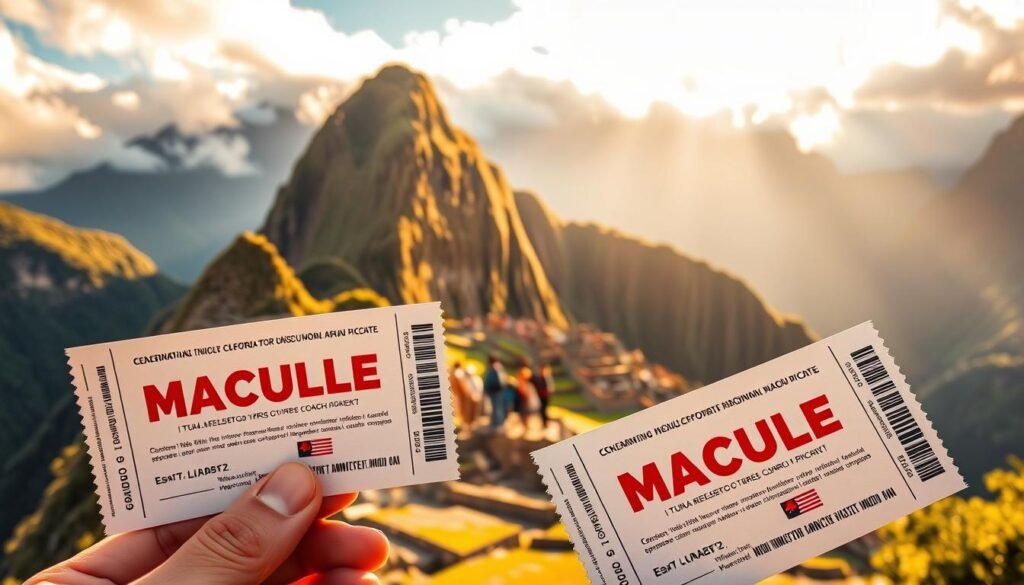
I pick a season first because which routes open depends on that choice. Regular season and peak season run on different calendars, and that changes what I can climb or walk.
Regular vs. peak ticket seasons and what opens when
Regular season (Nov 3–Jun 18) offers six core routes. Peak season (Jun 19–Nov 2, plus Dec 30–31) expands that to about ten routes.
Peak-only options include Sun Gate, Inca Bridge, Great Cave, and Huchuy Picchu. With fewer routes in regular months, I focus on the essentials and pace my day.
How far in advance I book Huayna Picchu and mountain routes
I reserve summit add-ons early. My rule: 3–6 months ahead during busy windows, and at least 2–3 months in quieter months.
That gives me space to lock a slot and still tweak travel plans without stress.
Visitor caps and time slots: securing the experience you want
Daily caps hover near 4,500–5,600, and each circuit has a strict time slot. Machu Picchu tickets are tied to those slots, so I map my must-do climbs first and buy tickets next.
- I pick early slots for mountain climbs to beat crowds and afternoon weather.
- I keep a backup summit (like Huchuy Picchu) if my first choice sells out.
- Planning in advance almost always secures the exact days and routes I want.
“Lock the hard choices first—then fill in the rest.”
Month-by-month snapshot: the best trade-offs all year
![]()
I map each month as a trade-off between weather, crowds, and photo chances. That view helps me lock in the right slot and gear for each day.
January–March: wetter, quieter, lusher
January and February bring the most rain, and the Inca Trail closes in February. I find fewer visitors and vivid green landscape.
Mornings often clear between showers, so I book an early slot and carry a rain shell.
April–May: transitional skies, postcard greens
April shifts toward the dry season. May often delivers clear skies and saturated hills.
I value May for steady light and strong views, and I still avoid peak crowds.
June–August: peak clarity, peak crowds
These months give the driest weather and the clearest vistas. They also bring the heaviest crowds.
I book months ahead, aim for the first or late slots, and accept busier paths.
September–November: shoulder serenity returns
Shoulder months offer more breathing room and stable conditions. Temperatures stay moderate and pleasant.
I favor afternoons here when the light gilds terraces and visitor flow eases.
December: festive bumps amid rains
December mixes rain with holiday spikes. I plan early entries and expect moody photos if showers appear.
“Each month is a small matrix of weather, crowd, and access trade-offs—plan by what matters most to you.”
Iconic add-ons: Huayna Picchu, Machu Picchu Mountain, Sun Gate, and the Inca Bridge
![]()
Choosing an add-on often comes down to effort, exposure, and how strict the slot rules are. I check routes, the morning windows, and my energy before I buy anything.
Routes, difficulty, and time slots I consider
Huayna Picchu (Circuit 3A) is steep, narrow, and supplies unique angles. Slots are limited, so I lock those tickets early and pace myself on the switchbacks.
Picchu Mountain (1A) takes longer but gives sweeping, panoramic views. I budget more water and start early when entries open.
In peak season I add Sun Gate (1C) and Inca Bridge (1D) for perspective without the same intensity as the big climbs.
Huchuy Picchu and Great Cave during peak ticket season
Huchuy Picchu is a good shorter summit with solid views. The Great Cave (Temple of the Moon) is quieter and rich in culture.
Practical rules I follow:
- I sequence add-ons so tickets and windows match and avoid backtracking.
- I bring trekking poles (when allowed), wind layers, and a flexible photo plan for clouds.
- I book mountain routes well in advance for calmer slots and better choices.
- I pick each add-on to match my fitness and fear-of-heights threshold so the day stays fun.
| Add-on | Circuit | Difficulty | Booking tip |
|---|---|---|---|
| Huayna Picchu | 3A | Steep, narrow, vertigo-prone | Book early; strict slots; pace the descent |
| Picchu Mountain | 1A | Longer, steady climb, panoramic views | Start early; bring water; expect sweeping vistas |
| Sun Gate / Inca Bridge | 1C / 1D | Moderate walks, great perspective | Add in peak season for variety; easier on legs |
| Huchuy Picchu / Great Cave | 3D / 3C | Short summit / cultural detour | Good backup options with fewer people |
“I weigh effort, slots, and views, then pick the route that keeps the day fun.”
Where I base myself and how I get there: Cusco, Sacred Valley, Aguas Calientes
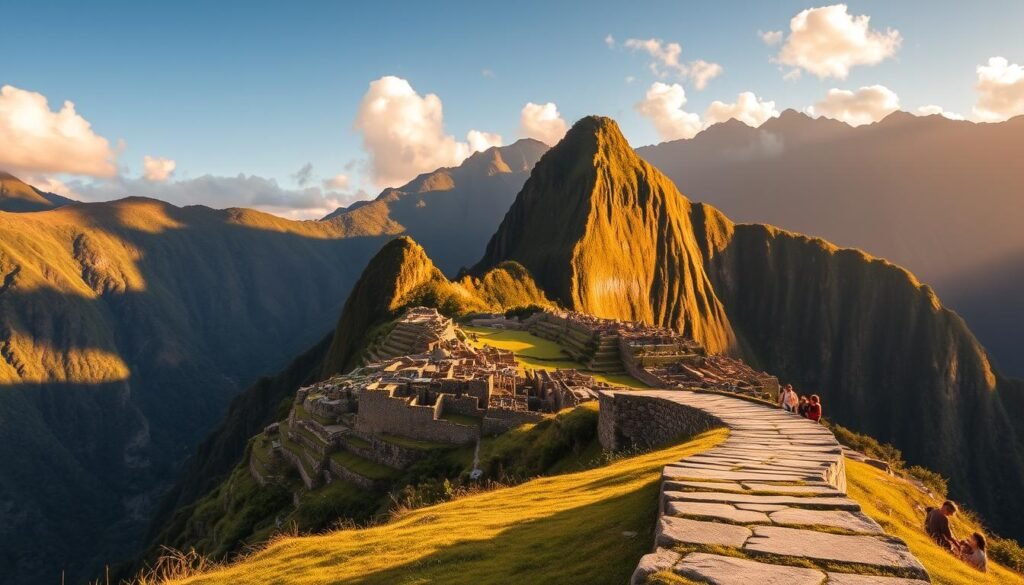
My base—Cusco, the Sacred Valley, or Aguas Calientes—sets whether my citadel day feels relaxed or rushed.
I usually plan 4–5 nights in the region for acclimatization and local context. I start lower in the Sacred Valley for easier adjustment, then move to Aguas Calientes the night before my entry for a calm morning.
Acclimatization tips and train‑bus logistics
I take arrival days slowly: hydrate, walk gently, and avoid heavy exertion for the first 24 hours. That reduces altitude strain and improves my hike day.
Trains to Aguas Calientes range from budget to luxury. I sometimes splurge on the Hiram Bingham for the dining car and scenery. The bus from town up to the site runs often, but I always pad extra minutes during busy windows.
Why I sometimes choose the one‑day Inca Trail
The one‑day Inca Trail pairs a train drop with a climb to the Sun Gate. It gives the thrill of the route without a multi‑day commitment, so I pick it when my schedule is tight.
“I’d rather add an extra day than rush this experience.”
- I add a day for Pisac or Ollantaytambo when weather and season allow.
- I plan train times around daylight and expected temperatures for smoother transfers.
What I pack by season: comfort, safety, and better photos
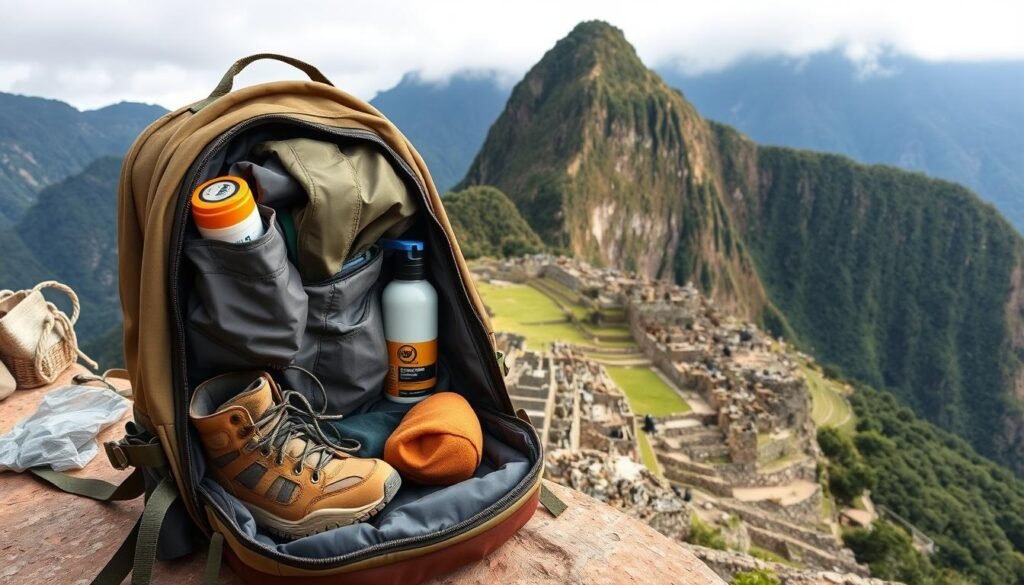
I plan my kit around quick changes in weather and the steep nature of the mountains. What I bring changes by season, but a few staples never leave my pack.
Dry months: I focus on layers for cool mornings and strong sun protection. Breathable shirts, a brimmed hat, high‑SPF sunscreen, and grippy hiking shoes make long walks much easier.
Rainy months: I prioritize a reliable rain shell, waterproof pouches, and quick‑dry clothes. Gaiters and spare socks keep my feet happy when trails get wet.
- I always carry a refillable water bottle, snacks, and a compact first‑aid kit.
- A microfiber cloth and dry bag protect my camera when sudden rain or mist appears.
- Small extras—gloves, a light beanie for golden‑hour shots, and insect repellent—save a lot of hassle.
Practical rule: dress in breathable, quick‑dry layers so a passing shower doesn’t end your day at the site. Comfort and simple gear let me focus on the view, the photos, and the life I find on each visit.
Conclusion
My final tip: I treat a ticket like a reservation for calm—lock your slot in advance, then shape the day around sunrise or late afternoon light.
If you want one line: the best time sits in late April–May and September–early November, when season and weather favor clearer skies and fewer crowds.
Dry season gives steady clarity; rainy months offer vivid landscape and less crowded paths. An Aguas Calientes night, smart pacing, and early or late entry change the whole experience.
Book circuits and mountain add‑ons well ahead, mind peak windows, and pick the tour that fits your energy. With a little planning, every month can reward patience and curiosity at machu picchu.


